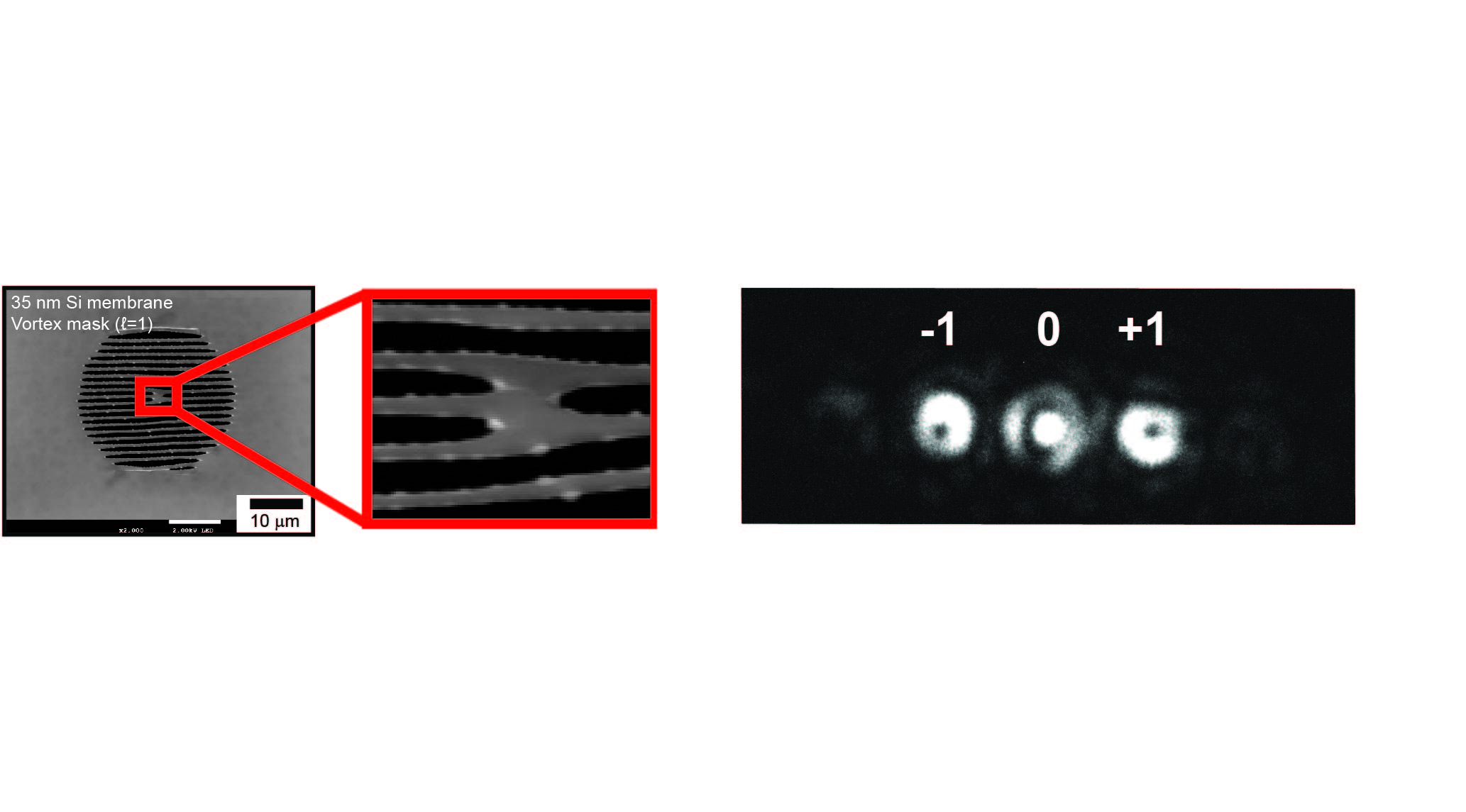|
|
|

|
|
Particle
acceleration, laser processing and superresolution microscopy are
promising applications of vector beams. We are exploring the ability of
small focal spot formation of vector beams for superresolution optical
microscopy, which can achieve the spatial resolution around 100 nm by
simply replacing a conventional laser source to a vector beam (10.1016/bs.po.2021.01.001).
Super-oscillation of vector beam is expected to be far beyond the
diffraction limit of light to achieve higher spatial resolution.
In addition, we are
interested in the development of laser processing utilizing unique
polarization features of vector beams (10.1364/OL.405852).
|
Material processing with an intense laser
field
(metastable nano-particle, mechanical atomic
bond formation) |
|
|
|

|
|
An intense laser field beyond 1013
W/cm2 can be produced by focusing a femtosecond laser pulse.
Irradiation of this intense field to materials produces high-temperature
and high-density plasma because of multi-photon absorption, avalanche
ionization or tunneling ionization. Light field around 1017
W/cm2 is comparable with the Coulomb field inside hydrogen
atom. We are exploring this intense laser field for the synthesis of
metastable alloy nano-particles and mechanical atomic bond formation by
laser shock wave.
|
|
|
|

|
|
Femtosecond laser irradiation of aqueous
solutions of chloroauric acid or chloroplatinic acid induces the
formation of gold or platinum nanoparticles due to the reduction of
metal ions by solvated electrons and hydrogen radicals generated by
photo-dissociation of water molecule. While bulk alloy of gold and
platinum is phase separating, nanoparticles sybthesized by the
irradiation of mixed aqueous solution of gold and platinum metal ions
are solid solution
(10.14356/kona.2022002).
Formation of the metastable solid solution nanoparticles was observed
even for high entropy alloy nanoparticles of Au-Pt-Rh-Pd-Ir system.
|
|
|
|
Intense laser
irradiation of materials are predicted to produce an ultra-high pressure
up to 1 TPa (107 atm) due to laser-induced shock wave induced
by rapid expansion of plasma in the material. Because this
ultra-high pressure propagates in one direction, anisotropic phase
transition of materials and simple atomic bond formation between
molecules are expected (10.1002/cphc.202000563).
We are challenging phase transition of carbon particles and mechanicla
synthesis of hydrocarbon molecules.
|
|
| Electron beam control by optical beam |
- Phase front transfer from an optical beam to an electron
beam
|
|


|
|
Development of base
technology to control an electron beam by an optical beam is in
progress. As a first step, a phase front transfer technique from optical
wave to electron wave intermediated by materials is being developed. For
example, a hologram was formed by the interference processing of
ultrathin film with an optical plane wave and an optical vortex beam.
The processed thin film can work as a phase hologram for the generation
of a vortex electron beam. In this process, a free-standing thin film
with the thickness of 10 nm was processed by a single laser shot (10.1364/OE.400941).
This process is high-speed and low-cost compared with focused ion beam
(FIB) technique. Because light has much lower kinetic momentum, the
process damage can be dramatically reduced.
|
|
|




